Like everyone else who travels to South America, or indeed, like any traveller of any description, Machu Picchu has been ‘on my list’ for years. When we decided to do this huge South American cruise nearly two years ago, I started exploring options on the best way to accomplish doing a Machu Picchu overland tour to see this world famous heritage site. There is, of course, the Princess ship shore tour option… but once we saw the price of it – over AUS$5,000 per person (far out – that’s a whole ‘nother holiday!), and read reviews about the ship tours that seem to render it as a somewhat haphazard experience at best, it was time to do some research and find a better option.
So I hit the cruise forums and the travel advice websites and asked the good people on the Princess Cruises Passenger Forum on Facebook, and one name kept coming up over and over again – Jaime from Patagonia Shorex. ‘You have to do Machu Picchu with Jaime’ … and, ‘Jaime is absolutely the best for MP’. So I contacted Jaime and gave him the dates that our cruise was going to be in Manta and subsequently Lima, to see what he could do for us. Within hours, I had a proposed itinerary and, comparably, very reasonable rates… and within 24 hours, we had booked to do this amazing experience with Jaime. As time went on, I had more and more people join my group – people who had seen my post on Cruise Critic, or on Facebook, and some other people who had gone to Jaime directly after recommendations from their various travel agents. Over the course of the last 8 weeks on the ship, we have gotten to know most of our little group of Machu Picchu adventurers quite well – there was 22 in our group, and if the others were half as excited as I was about our impending detour of a lifetime, you could have bottled the anticipation.
Because I had booked first, the tour became “Robyn’s Group”, and we had arranged to meet in the Crooner’s Bar at 08:30 while I went down to administration to wait for Juliar – the lady who was holding out passports hostage! The plane to meet so early was because Juliar had told me that the Manta port in Ecuador has one of those horrid little shuttle systems to get you to the cruise ship terminal, and I thought we might need to get ourselves into the shuttle queue as early as possible – but late the night before I had word from Jaime, that he had managed to gain permission to bring his buses onto the port, right beside the ship, so we wouldn’t have to line up for the shuttles. Thank god for small mercies. Unfortunately the processing of the passports was taking longer than anticipated (very likely due to the local officials processing approximately 200 Princess ship tour passengers before processing any for private tour people) and it wasn’t until about 09:50 that I finally received all our passports and was able to disseminate them to our group so we could proceed ashore.
Eventually we walked off and there was Jaime waiting for us as promised. Big sigh of relief on my part – I willingly admit that I am never want to be head counting tourists again, I was so happy to see the professionals on the dock to take over. 🙂 Onto the bus, and off we went – headed for Guayaquil airport. On the way, we had a local guide, Daniel who was full of interesting information about Ecuador and the local area… if you’re not keen on reading about Ecuador, then skip down to “HERE!” below. 😛
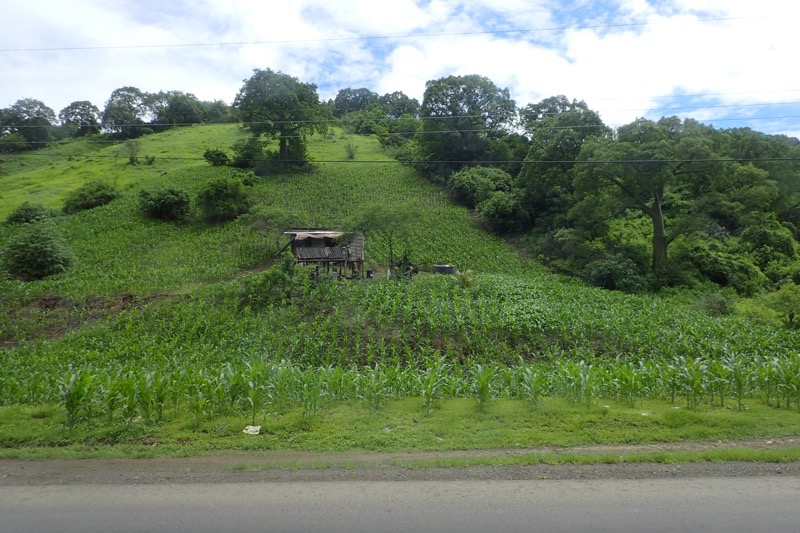
Ecuador was so named because the equator runs through it literally 0 0 0 degrees. Plenty of countries are on the equator, but French researchers who explored the country named it Ecuador and so it stayed.
One of the first places we drove through was a small town called Montecristi which is famous for its woven straw hats – better known as Panama Hats. Apparently, those ‘Panama’ hats actually originated in Ecuador. The weaving techniques used to make these hats had been used by indigenous people in this region for thousands of years, but Montecristi became famous for their hats when Theodore Roosevelt was responsible for all the workers on the Panama Canal being supplied with them in the early 1900s. It takes up to 7 days to hand weave a genuine Panama hat and they can cost hundreds if not thousands of dollars. Genuine Panama hats will always have a ‘Made in Ecuador’ label in them, so we are told, and the locals here refuse to call their Ecuadorian hats, Panama hats, instead they call them ‘sombreros de paja tequila’ which means, ‘tequila straw hats’. Unfortunately (or perhaps fortuitously depending on how you look at it), we did not have time to stop in this little town to go hunt for potentially expensive, genuine tequila straw hats. 🙂
Ecuador has several different regions consisting of the Pacific Coastal region, the Mountain region, the Sierra region and the Amazon region. As such it is very diverse in its agriculture, economy and even its population. Europeans, primarily Spanish, came to Ecuador in search or gold, silver, stones and spices, and they found some, but many of the indigenous learned to quickly hide these things from the Europeans.
Once away from the Coastal region, the countryside has very strong wet and dry seasons, which are predictable and happen abruptly ‘the seasons, they turn on and off like a tap’ according to Daniel. During the dry season, water is literally obtained from the excessive humidity in the air, and people use large areas covered in fabric to capture condensation and use this as a reliable water source.
The soil in much of Ecuador is of very good quality, thanks to over 75 volcanos, 15 of which are still active. The very rich volcanic soil allows most crops to grow anywhere from sea level regions to 4000 feet above sea level, and agriculture was once their biggest export – but now, it is oil. Coffee is still a major export crop, however Ecuadorians are not fond of their own strong coffees, and they send it all overseas… and I couldn’t believe this, but in Ecuador, they actually prefer crappy old Nescafé instant coffee over the beans they are famous for. Go figure.
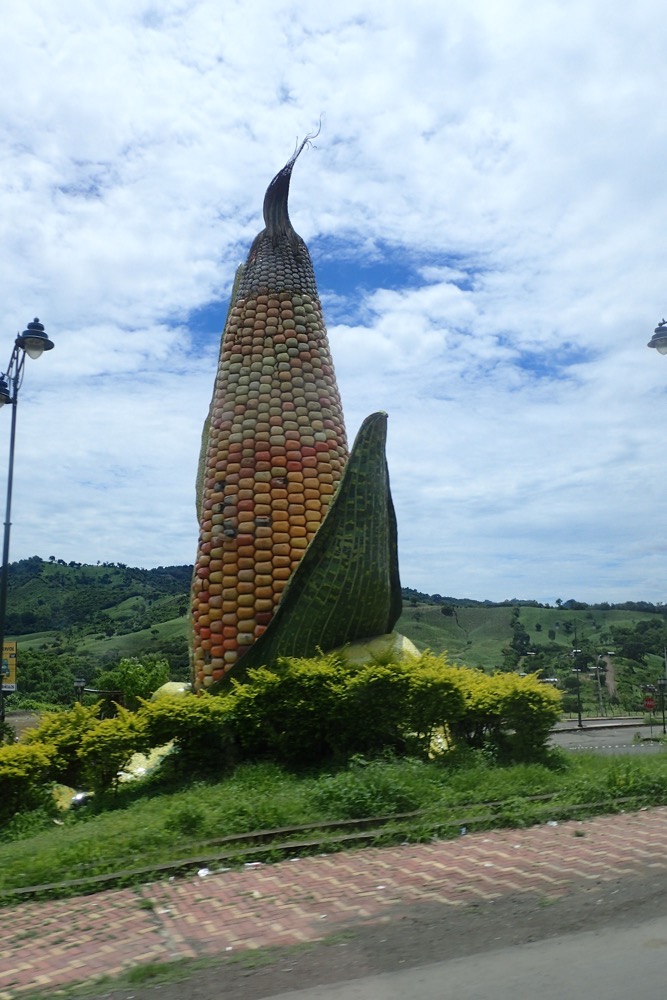
Being right on the equator means Ecuador gets 12 good hours of sunlight every single day, all year round. So they are able to grow all sorts of tropic fruits, mango orchards everywhere in the regions we are driving through, and rice of all things. Ecuador is huge on rice and they serve rice with nearly every meal, and lots of it as we were to discover. Oh and corn – I’ve never seen so many miles and miles of corn, and apparently they cultivate a gazillion varieties of the stuff.
Another famous and prolific export is, of course, the cacao for chocolate. Ecuador has exported cacao for over 200 years apparently and most of the cacao has been used in the US and Europe to turn into sweet milk chocolate products. But in the last ten years, Ecuador has changed their tactics, and started value adding by processing chocolate locally to create jobs and add a boost to their economy. They now produce many very fine chocolates – mostly dark chocolate products, and in particular they make unique chocolates with other local ingredients. For example, rich dark chocolate with the pink salt crystal mined in Cusco. We saw some of this at the airport, it was ridiculously expensive, but I may have to find some to take home for some of my chocolate loving friends, even though I don’t like the stuff myself.
What else? WWII saw some major changes in Ecuador, in part due to war rationing and a drop in demand for chocolate products, they needed a different income stream, and it was around this time that oil was found in Ecuador and has been a major export ever since. Oil is found in the Amazonian region of the country and according to Daniel, is largely responsible for the country’s prosperity now. Seriously, what prosperity? Everywhere we look, we see people living in poverty in lean to shanty housing and with no proper sanitation?! Really makes you wonder what it was like before the oil income? Diesel here is really cheap, around USD$1.00 per gallon because the government controls the prices and it has not changed in price for the last ten years. Speaking of money, Ecuador has no local currency, in 2000 they adopted the USD as their official currency, though they have the right to mint their own coins, these coins are not legal tender back in the US. It’s a weird arrangement – a completely independent nation that entirely uses a foreign currency. Very odd.
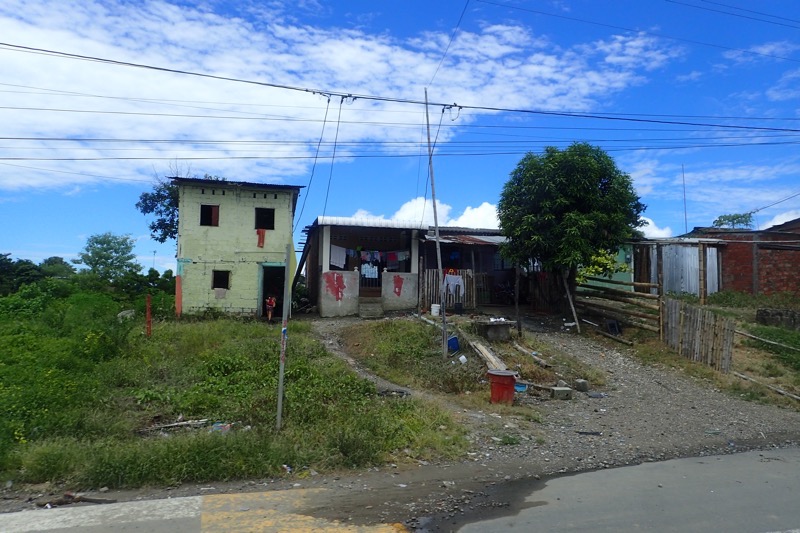
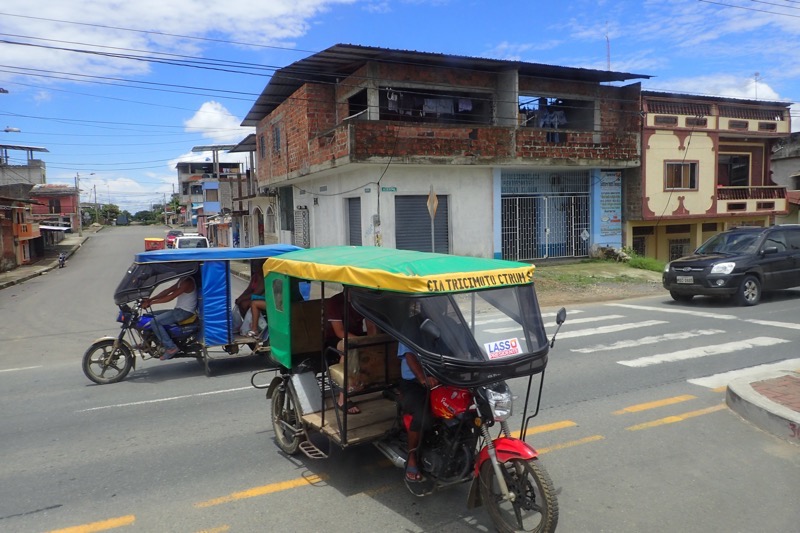 The saint of Guayaquil, who isn’t actually from Guayaquil and whose name I’ve forgotten… whoops. (Maybe I’ll come back and fix that if I ever return to the land of decent internet). Her name is Narcisa de Jesús Martillo y Moran.
The saint of Guayaquil, who isn’t actually from Guayaquil and whose name I’ve forgotten… whoops. (Maybe I’ll come back and fix that if I ever return to the land of decent internet). Her name is Narcisa de Jesús Martillo y Moran.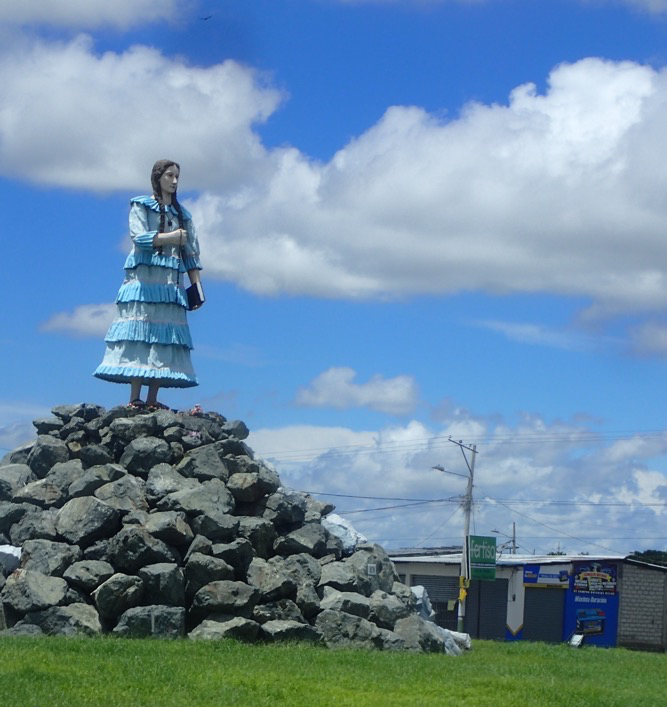
“HERE” 😛
Anyway, many mango orchards and rice paddy fields later, we arrived at Guayaquil. First things first – lunch. We went to a really lovely local restaurant called, Puerto Moro, where we started in on some fresh made lemonade and weird, but delicious, cheesy rice balls for a starter. We then had a big choice to make, ‘chicken or meat’. I’ve noticed that in South America, chicken is always distinguished from meat, but if you want to know if they are offering you beef, pork or lamb in that ‘meat’ selection – you’ll have to actually enquire. Lunch was very nice – I opted for the chicken and it was cooked in an unusual herb mixture and served with salad, plantains, and (you guessed it!) a big pile of rice
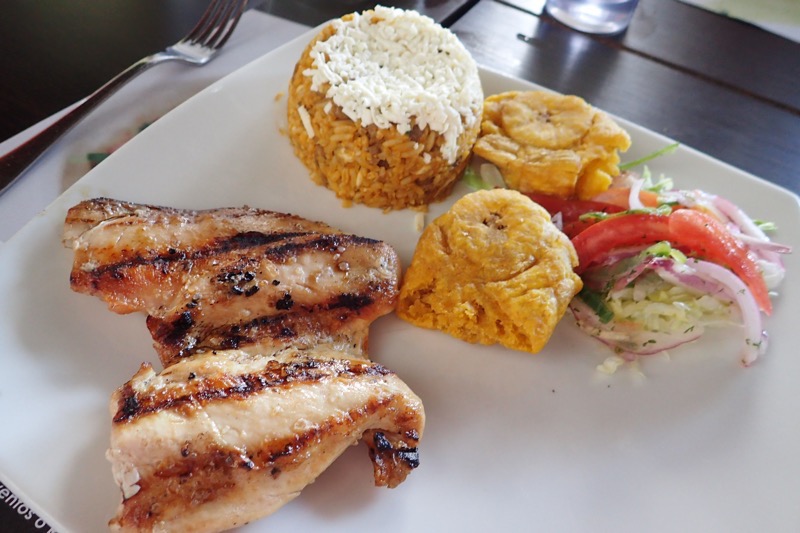
After this we made our way to the Guayaquil airport, where I was surprised to find a large international airport as modern as any I’ve visited anywhere in the world. It was really quite incongruous with the obvious poverty we had witnessed on our drive to get there – huge duty free store, expensive straw tequila hats for sale, gift shops, book shops, coffee shop and a bar… and all very modern and clean. It’s easy to see where recent infrastructure spending has gone. Processing through customs was a bit err… interesting though. We waited in a queue for about 45 minutes to get through customs in spite of the fact that there was about 8 people processing and seemingly not that many people in front of us. When I got to the front of the queue, it became obvious that something was amiss. Some passports were scanning fine and being processed relatively quickly, but many were not – including mine. The customs officer who processed my passport was pfaffing around a lot (I’m used to this, given my previously documented experiences with a passport with a prominent Pakistani visa in the front), but it wasn’t scanning for her. In the end she gave up and took a used what looked like her personal mobile phone, the gold sparkly phone cover was a giveaway, to take a picture of the page with my entry and exit stamps and the photo page of my passport! I was somewhat perturbed by that, but saw other customs officers doing the same thing! Hmmm….
Then it was time to wait. Transit days tend to be filled with ‘hurry up and wait’ and this one was no different. We were all processed in and in the boarding gate and we had over two hours until our flight was scheduled to depart. We chatted among ourselves, and mostly engaged in that most enjoyable pastime, people watching, until eventually our flight was called and we all boarded.
The flight was just the way we like them, uneventful. The only oddity was being handed a customs declaration form to fill out – in Spanish! We muddled through the forms as best we could and tried to get assistance from the airline staff, but I still felt uneasy about signing a document in a foreign language that I couldn’t read! We arrived at Lima after barely a 1.5hr flight, and again with the customs nonsense, though this time the process went much smoother. I think we are a bit spoiled in Australia, being such a large continent with a singular national government means you can travel quite a long way on the one mainland before you need to deal with customs.
Eventually we popped out the other end at Lima and made the arduous trek to our hotel… the Costa del Sol Wyndham Hotel at Lima airport – literally two minutes walk from the airport doors! It is a lovely modern hotel that is very well appointed. What an excellent choice, for proximity and convenience, seeing we are flying out first thing tomorrow. We wheeled our little cabin bags across the road, handed over passports, had room keys, stashed our stuff, freshened up, and were then happily situation in the hotel bar enjoying complimentary pisco sours, all within about 30 minutes of having left the airport. 🙂

It was a long, but strangely informative, transit day and most of us were all free wifi’d out by 11:30pm so we turned in fairly early.
Tomorrow: Cusco… onward and upwards, literally!
